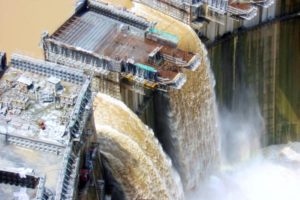
The project was awarded to Salini Costruttori SPA, an Italian company that has built more than 20 dams in Europe, Asia and Africa, including the Gilgel Gibe II and Tana Beles dams in Ethiopia, and is currently constructing the on-going Gilgel Gibe III dam. The electro – and hydro- mechanical work at GERD is being undertaken by Ethiopia’s Metal and Engineering Corporation (METEC), while Alstom, a French engineering company, will supply turbines and generators and supervise the installation of all the electro-mechanical equipment for the hydro-power plant’s consulting work, carried out by a joint Italo-French Engineers company.
The primary objective of the GERD project is the generation of electricity. It will enable Ethiopia to completely cover the country’s internal power needs. These have been growing at an average rate of 25 percent a year. A reliable and affordable source of energy is a fundamental need not just for the well-being of the population, but also for the economic growth and poverty-reduction efforts being undertaken by the country.
Many rural communities in Ethiopia still do not have the benefits in health and quality of life provided by electrical services, such as lighting or refrigeration. Ethiopia also aspires to be the green energy hub of East Africa, delivering clean and renewable energy at cost value to neighboring countries. It has already signed contracts to export electricity to Kenya, Djibouti and Sudan.
According to various studies, a one unit percent increase in energy supply can increase economic growth by at least 1 percent. On that basis, when GERD begins operations, the national economy will increase by an additional 4 percent. This, in turn, will provide a catalyst for mutual development and interdependence, helping create long-lasting peace between countries throughout the region.
However, the benefit of the GERD is not restricted to power supplies. The dam will regulate the water and ensure a steady flow throughout the year, preventing the occurrence of floods downstream in Sudan or Egypt. Equally, GERD will hold back a major portion of silt and sedimentation. Over the years, this has rendered dams located in downstream countries much less effective, causing them to lose their water storage and electric power generation capacities.
Indeed, this had meant both Sudan and Egypt have had to allocate huge sums to infrastructure maintenance, including replacement of turbines and dredging of clogged irrigation channels. Another benefit is that the topography of GERD’s location and the fact that the reservoir is to be built in a deep gorge will help minimize the water’s direct exposure to sunlight and reduce evaporation loss by up to 4 billion cubic meters annually. This, of course, means there will be significantly more water available for downstream countries to use.
Red the full story at ventures-africa.com


